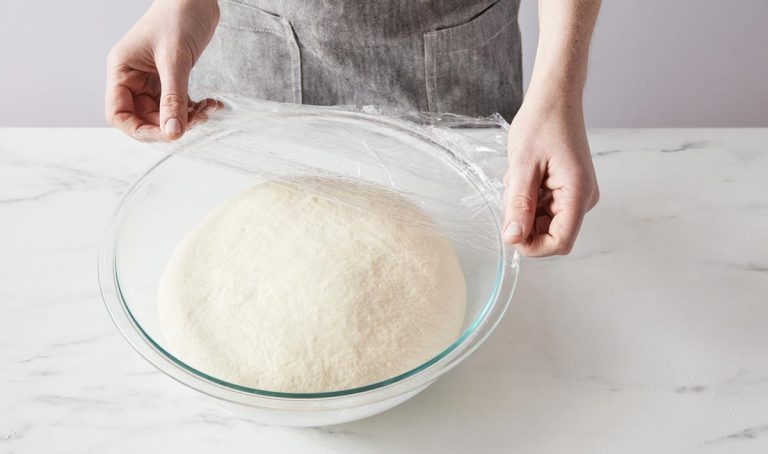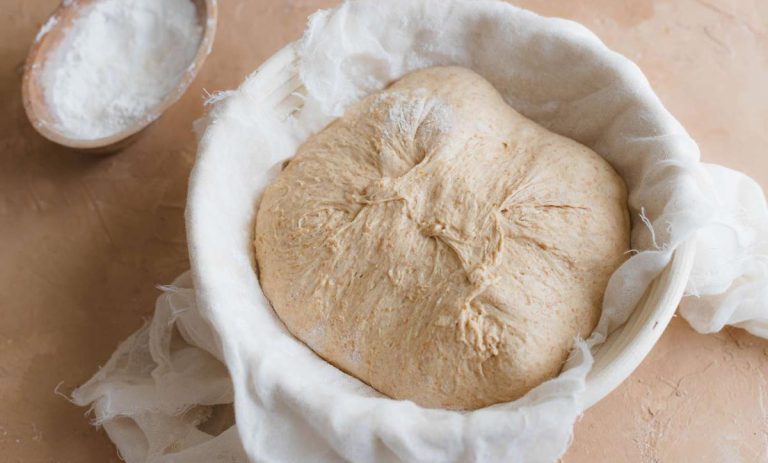Italian Pizza vs American Pizza: 15 Key Factors Revealed!
Who doesn’t enjoy a slice of pizza? It’s hard to believe that someone wouldn’t appreciate pizza. Italian and American pizzas are beloved by many as being two of the best styles out there! In Italy, pizza is more than a dish; it’s a symbol of tradition and community celebrations. In America, pizza has evolved into a comfort food, with pizzerias dotting the streets in every city and town.
According to a survey in 2019, 33 million Americans revealed they would want their last meal to be pizza! So the burning question is, which pizza is better? Italian pizza vs American pizza? Let’s find out!
We’ll explore the 15 key differences between Italian and American pizza. These differences range from cooking methods to size and shape and much more. Get ready to learn all about what makes Italian and American pizza so special!

Crust Thickness
A thin crust on a pizza is a symbol of Italian cuisine. The baker carefully stretches the dough to achieve a crispy crust when baking it in a woodfire oven at high temperatures. The intense heat crisps up the edges perfectly. Neapolitan pizza exemplifies this with its light and delicate texture, allowing the tangy tomato sauce and fresh mozzarella cheese to shine. Neapolitan pizza holds a spot in the hearts of pizza enthusiasts, and once you taste it, you’ll see why it’s so beloved!
On the other hand, American pizza is celebrated for its thick crust, making it the ultimate comfort food. Occasionally, these pizzas feature stuffed crusts filled with gooey cheese, delivering a delightful taste that many describe as reaching food heaven! Rather than having a crispy crust, they have a soft crust that creates its signature chewiness and keeps you coming back for more.
Dough Preparation
Staying true to its origins, Italian pizza dough embodies simplicity and authenticity. Made with four simple components: flour, water, yeast, and salt. Each ingredient plays a role in shaping a dining work of art. The dough is kneaded until it’s smooth and stretchy, then left to rise for 16-24 hours to let those flavors develop, and the crust becomes light and fluffy.
Americans have a reputation for being ‘extra’, so that’s why they go above and beyond the basic dough ingredients. They use all-purpose flour or bread flour, which is high in gluten. They’ll toss in some sugar, oil, and maybe even a splash of milk or eggs for a chewier, sweeter base. It’s like taking pizza dough to the next level!
Sauce
Italian sauce revolves around simplicity with no additives, letting those crushed San Marzano tomatoes steal the show with natural sweetness and tanginess. Italian pizza sauces often use pureed fresh tomatoes with an added pinch of salt and a hint of basil. It’s the perfect partner for that crispy crust and gooey cheese, creating a flavor explosion that’ll have you saying, “Bellissimo!”
American pizza sauce takes on a bolder profile. It is much thicker and infused with spices like garlic, oregano, and red pepper flakes. It is typically made with canned tomatoes and undergoes a slow cooking process, which results in a thicker sauce that adds another layer of depth to the pizza experience.
Cheese Variation
Italian pizza is celebrated for its creamy texture and subtle flavor. It primarily features fresh or buffalo mozzarella and notably avoids the use of pre-shredded cheese. Italians use their unique mozzarella di Bufala, a cheese made from buffalo’s milk. They spread it very roughly with their hands and spread it around the pizza. The uneven distribution of cheese browns unevenly and gives the pizza a beautiful pattern. Surprisingly, some traditional Italian pizzas, like the Marinara, don’t use any cheese at all.
In contrast, the American variation combines a mix of cheeses, including sometimes pre-shredded mozzarella. Typically, cooks evenly sprinkle grated cheeses such as mozzarella over the pizza. Popular choices like provolone, cheddar, and parmesan are frequently combined to create a gooey cheesy layer that’s simply delightful.
Toppings
In Italy, less is more when it comes to pizza toppings. Italian pizza emphasizes quality over quantity. Think fresh basil, ripe tomatoes, and prosciutto – each chosen for its superior flavor and freshness. They prefer to enhance the natural flavors of every topping without overshadowing the others. Here are some typical Italian pizzeria variants:
Pizza Capricciosa
- Toppings: Ham, olives, mushrooms, and artichokes.
Quattro Formaggi
- Toppings: Mozzarella, gorgonzola, fontina, and Parmigiano.
Tonno e Cipolle
- Toppings: Canned tuna fish and onions.
American pizza is a celebration of innovation! It often blends options with at least five distinct ingredients. Meat lovers can select from various toppings like pepperoni, sausage, beef, and chicken. Let’s not forget about the pineapple pizza craze, which has gained popularity over time. Another favorite is the Philly cheesesteak pizza featuring steak and sautéed onions. The charm of American pizza lies in the ability to mix and match toppings to craft any flavor combination you crave!
Size and Shape
Italian pizza is usually between 8 and 12 inches in diameter. Even young children can manage to eat a whole pizza alone! It’s often served in small circular pans suitable for one serving. It’s all about quality over quantity, allowing each bite to be a culinary delight.
One key difference between American pizza and Italian pizza is the overall weight—American pizzas are much heavier. This extra heft is due to the thicker dough and sauce, as well as a more liberal application of various toppings. People typically share American pizzas, often eating them on the go in groups of 2-3. Often cut into 8-12 slices before serving. The sizes range from 12 to over 24 inches.
Cooking Method
In Italy, pizza has yet to stray from the past method of using blazing wood-fired ovens. Italian chefs believe this traditional oven preserves the taste of the pizzas. Italian chefs cook their pizza at extremely high temperatures, between 800°F (425°C) and 900°F (485°C), which means the pizza can cook in less than 2 minutes, creating a slightly blistered crust.
In the United States, pizzas are typically baked in gas or electric ovens that keep temperatures steady at around 450°F (230°C) to 500°F (260°C). They usually take about 10 to 15 minutes to cook thoroughly, ensuring the crust is crispy and the toppings are evenly done.
Serving Style
Italians typically use cutlery to eat pizza in a restaurant, and they usually like to wash it with a glass of wine. This method offers a more formal dining experience, allowing you to savor the delicate balance of the thin, crispy crust and fresh toppings in every bite.
Americans often eat their pizza by hand. It is usually pre-cut and served in slices, making it perfect for casual settings! This approach adds to the convenience of enjoying it at family reunions or as a quick bite on a night out. Specifically, New York-style pizza is commonly folded in half lengthwise to make it more manageable for eating while on the move.
Flavor
Italian pizza offers simplicity with a burst of freshness. The sauce, often from crushed San Marzano tomatoes, balances sweet and tangy notes. Cheese, like classic mozzarella or buffalo, brings a creamy texture and subtle flavor. Chefs carefully select toppings for quality, using natural flavors like basil, ripe tomatoes, and prosciutto.
American pizza is a bold explosion of flavors. The thicker and spicier sauce flavor ignites the palate with garlic, oregano, and red pepper flakes. Cheese varieties extend beyond mozzarella, offering a melty, rich layer of provolone, cheddar, and parmesan. Toppings range from classic pepperoni to adventurous pineapple and Philly cheesesteak.
Regional Variations
Across Italy, regional pizza differences highlight the essence of Italian cuisine: simplicity, quality, and tradition. Pizza is considered an art form, and each region boasts its own unique style.
- Naples: The birthplace of pizza, you’ll find Neapolitan pizza. Known for its thin, soft crust and simple, fresh toppings. Think San Marzano tomatoes, buffalo mozzarella, and basil, all baked to perfection in a wood-fired oven.
- Rome: You’ll discover Roman pizza, which is all about a thin, crispy crust. Often cut into square slices, the Roman pizza features a variety of toppings from classic Margherita to creative combinations like potatoes and rosemary.
Across America, pizza has taken on a life of its own, with each region offering its own spin on this beloved dish:
- New York: You’ll encounter New York-style pizza, characterized by its large, thin, foldable slices. It’s all about the balance of a crisp crust, tangy tomato sauce, and gooey mozzarella, perfect for grabbing a slice on the go.
- Chicago: Head over to Chicago, and you’ll find deep-dish pizza known for its thick, buttery crust and layers upon layers of cheese, toppings, and chunky tomato sauce. It’s a hearty, fork-and-knife affair that promises a filling meal.
- California: Pizza gets a gourmet twist with California-style pizza. Here, expect innovative toppings like arugula, goat cheese, and barbecue chicken on a light, crispy crust, reflecting California cuisine’s fresh and creative spirit.
Ingredient Source
When talking about Italian pizza, the focus is on using locally sourced and seasonal ingredients. Just imagine savoring a slice topped with sun drenched tomatoes, fragrant basil and rich buffalo mozzarella—all freshly picked from nearby farms. Italian chefs take pride in selecting ingredients that are in season to ensure every pizza contains fresh flavors. This dedication to using high-quality ingredients is an element of Italian cooking and crucial to the exquisite taste of their pizzas.
The approach to pizza ingredients in the United States is slightly different, reflecting the country’s diverse and expansive food culture. American pizzas often feature a variety of toppings, including both fresh and processed options. You might find everything from pre-packaged pepperoni and canned pineapple to gourmet ingredients like truffle oil and artisanal cheeses. This adaptability turns pizzas into a platform for culinary exploration, opening up endless creative avenues!
Presentation
Italian pizza has a rustic and straightforward presentation. It consists of a thin, slightly charred crust with a few fresh ingredients like tomatoes, mozzarella, and basil, served uncut for a simple, elegant look.

American pizza is visually elaborate. Typically loaded with a variety of toppings, all evenly spread over a thick layer of cheese. Cut into slices, it looks indulgent and is ready to grab and enjoy.

Dietary Preferences
Italian pizza is all about simplicity, fresh, and wholesome ingredients that fit with traditional eating habits. Featuring veggies, light cheese and olive oil.
American pizza has options for vegetarians, vegans and gluten-free eaters. Crusts and toppings can be customized for everyone.
Cultural Significance
The great baker Raffaele Esposito from Naples is credited for the creation of Pizza. In Italy, pizza is a cultural and culinary art form. The first pizzeria, known for serving la pizza Napoletana, originated in Naples, Italy, during the 18th century. It’s about tradition and craftsmanship, with recipes often passed down through generations.
The rise of pizza’s popularity in the United States is due to the significant influx of Italian immigrants, who numbered 4 million out of the 20 million immigrants arriving between 1880 and 1920. Now, American pizza is versatile and popular as a fast-food favorite. It’s enjoyed at family dinners, parties, and gatherings, reflecting its role in American social life and culinary innovation.
Price
You can enjoy a great Italian pizza for $7-$15. A great option for eating in a pizzeria or restaurant. Easy choice to not break the bank!
American pizza prices range from $17-$24. You can find budget options at fast food chains and takeout places for a quick and cheap meal. On the other end of the scale, gourmet pizzerias offer high-end, creatively topped pizzas that are expensive. Basically, there’s an American pizza for every budget and taste!
Which is Better: Italian Pizza vs American Pizza?
Italian pizza stands out for its use of ingredients, like tomato sauce and cheese giving it an authentic taste. Whereas American pizza is known for its variety of toppings offering a more indulgent flavor experience.
Italian pizza prides itself on simplicity, featuring a crispy crust topped with locally sourced ingredients such as tomatoes, mozzarella cheese, and basil. Its appeal lies in its presentation and genuine flavors that cater to those who admire craftsmanship.
On the flip side, American pizza impresses with its diversity by presenting a collection of crusts, toppings, and flavors. Many iconic styles include New York-style slices to the indulgent Chicago deep-dish and inventive California-style pies.
In the battle of popularity between the two pizzas both hold their ground firmly. Italian pizza garners praise worldwide for its authenticity and cultural importance among pizza lovers. Meanwhile, American pizza has gained favor due to its versatility and widespread availability. The authenticity factor gives Italian pizza an edge in our opinion!
Final Thoughts
Italian and American pizzas offer a tempting array of flavors and experiences, showcasing the rich diversity of pizza culture. Instead of choosing sides, why not embrace the unique qualities of both? By savoring the distinct charm of Italian simplicity and the creativity of American innovation, you embark on a culinary adventure that celebrates the artistry and tradition of pizza making. So, let your taste buds be your guide as you indulge in the best of both worlds and discover the delightful nuances that make each style a beloved culinary masterpiece. Here’s to celebrating pizza differences—one slice at a time!
FAQs
How is American Pizza Different from Italian Pizza?
American pizza tends to have thicker crusts, a wider variety of toppings, and a heavier focus on cheese compared to Italian pizza.
Is Pizza Originally American or Italian?
Pizza originated in Italy, Naples. However, it has evolved significantly in the United States, leading to the creation of American-style pizza.
What’s the Difference Between New York Pizza and Italian Pizza?
New York pizza is a style of American pizza characterized by its large, thin crust that is foldable yet sturdy. In contrast, Italian pizza typically has a thinner, crispier crust with fewer toppings.
Why is Italian Pizza Healthier than American?
Italian pizza uses fresher, simpler ingredients with less cheese and oil. It’s lower in calories and fat than American pizza, which has thicker crusts, more cheese, and more toppings.
What Nationality Makes the Best Pizza?
Pizza was born in Italy, and the Neapolitan style is regarded as the best. American New-York style follows behind because of all the flavors, toppings, and Italian influence in New York.







